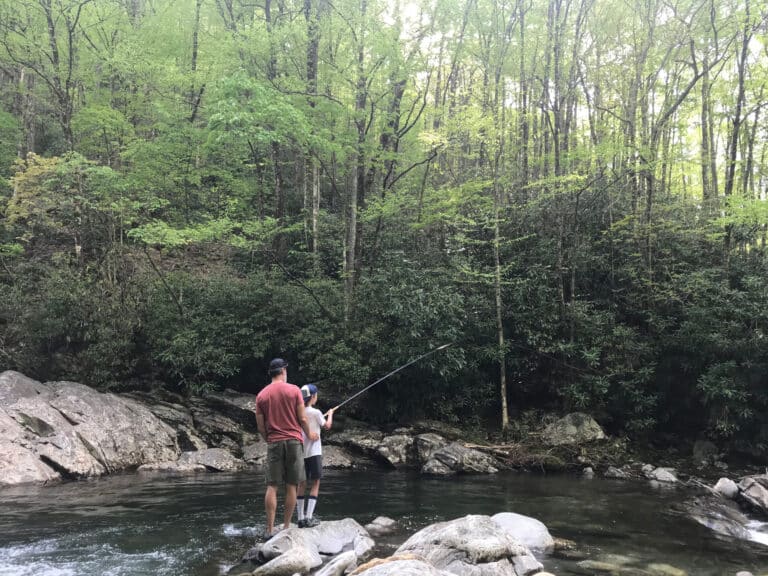Rock poster art first gained popularity in the late 1960s. It’s experiencing a revival today with an emerging crop of talented gig poster artists, whose works earn loyal collector followings and fetch high dollars. The phenomenon was recently captured in the new critically acclaimed documentary American Artifact: The Rise of American Rock Poster Art. Many of these artists work right in our Blue Ridge backyard. Check out work from four of the most popular poster artists in the South.
 Jeff Wood
Jeff Wood
Drowning Creek Studios • Athens, Ga.
Jeff Wood’s musical tastes know no boundaries. He grew up in the 70s in Athens, Ga., loving the Allman Brothers Band but also surrounded by his hometown’s rise of R.E.M. and the B-52s and Atlanta’s new wave punk explosion. After art school, he did corporate design work for Disney, NASCAR, and Harley Davidson, but all along his passion was bootlegging rock t-shirts and posters. In 2000 he scaled back the lucrative gigs and outfitted an old slaughterhouse on family land just north of Athens with a screen printing press. He did a few posters for Widespread Panic and soon his work was sought by the rest of the jam band scene. He has since become one of the most popular rock poster artists working today with high-profile prints for hundreds of bands including Phish, Gov’t Mule, and Michael Franti. A chance encounter with Allman’s road manager Kirk West also turned into an extensive series for his favorite band. In the last few years he’s scaled his output back to just a few bands so he can focus on painting, and he just helped open Anchor Gallery, Athens’ first rock and visionary art gallery.
“My role in the rock art world is to document moments in time for people,” says Wood. “It’s a sacred trust to document memories.”
 Wes Freed
Wes Freed
Richmond, Va.
If you own a Drive-By Truckers album, you know the redneck folk art of Wes Freed. For nearly 10 years, the work of the Virginia-based Freed has been the exclusive visual companion to the Truckers’ erudite observations on rural Southern life. Freed originally developed his style out of his own newspaper comic series, Willard’s Garage, which depicted fictional characters based on local folks he observed in the rural small towns of the Shenandoah Valley where he grew up. Freed met the Truckers when he was playing in rock bands around Richmond, where he now lives and once hosted a series of popular alt-country shows called the Capital City Barn Dance.
“Growing up I spent a lot of time sitting on the bed of my grandpa’s old pickup truck, listening to him tell me stories about the area,” says Freed. “The comic and the early roots of my art came from those stories.”
Now Freed stays busy depicting the seedy characters and sordid tales from Dixie’s underbelly that are vividly illustrated in the Truckers’ music. In addition to doing the band’s CD covers, posters, and other merchandise, Freed does a brisk business with original painting commissions and tattoo designs.
 Justin Helton
Justin Helton
Status Serigraph Knoxville, Tenn.
An increasingly popular young upstart in the gig poster world, Helton is a music industry graphic designer by day. In the past few years his poster work—released under the studio name Status Serigraph—has been commissioned by a diverse range of artists including Phish, Ween, and Shakira. He has also been doing an ongoing series for the Avett Brothers. Helton’s accessible style incorporates computer-based graphic design and hand-drawn details, as well as photographic and typographic elements.
“I like to listen to the band and decide how to design for them,” Helton says. “I try to get a sense of what kind of feeling their music puts forth and let creativity take over from there.”
 Hatch Show Print
Hatch Show Print
Nashville, Tenn.
In downtown Nashville, Hatch Show Prints has been cranking out letterpress flyers since 1879. Using the same vintage equipment that they used in the early days, the company creates slices of Southern Americana in modern music with their distinct block lettering and simple silhouette images. Hatch—now owned by Country Music Hall of Fame—still handles most of the prints for Nashville’s historic Ryman Auditorium, as well as a variety of other venues across the country.









